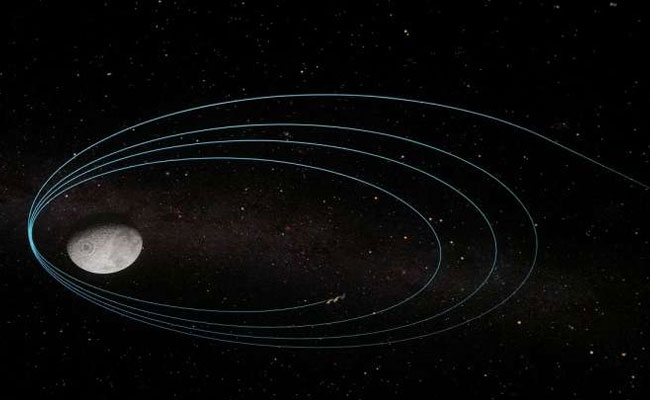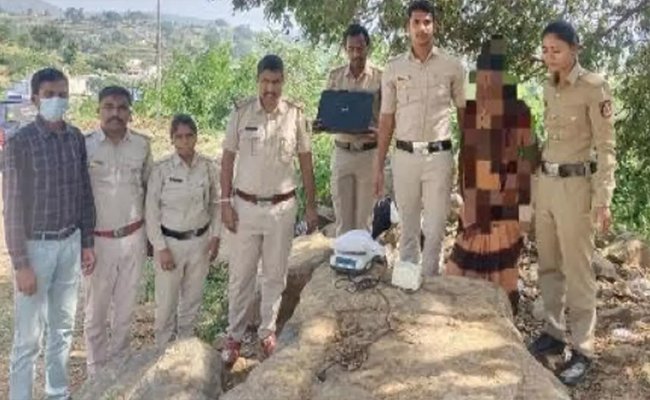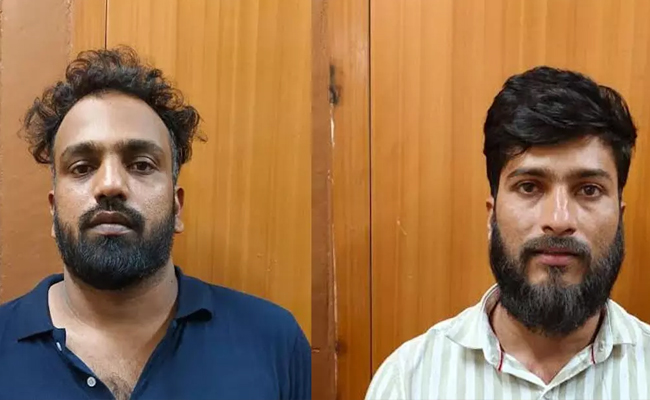New Delhi (PTI): Scientists analysing the remote sensing data from India's Chandrayaan-1 lunar mission have found that high energy electrons from the Earth may be forming water on the Moon.
The team led by researchers from the University of Hawai'i (UH) at Manoa in the US discovered that these electrons in Earth's plasma sheet are contributing to weathering processes -- breaking down or dissolving of rocks and minerals -- on the Moon's surface.
The research, published in the journal Nature Astronomy, found that the electrons may have aided the formation of water on the lunar body.
Knowing the concentrations and distributions of water on the Moon is critical to understanding its formation and evolution, and to providing water resources for future human exploration, the researchers said.
The new finding may also help explain the origin of the water ice previously discovered in the permanently shaded regions of the Moon, they said.
Chandrayaan-1 played a crucial role in the discovery of water molecules on the Moon. The mission, launched in 2008, was the first Indian lunar probe under the Chandrayaan programme.
Solar wind, which is composed of high energy particles such as protons, bombards the lunar surface and is thought to be one of the primary ways in which water has been formed on the Moon.
The team investigated the changes in surface weathering as the Moon passes through Earth's magnetotail, an area that almost completely shields the lunar body from solar wind but not the Sun's light photons.
"This provides a natural laboratory for studying the formation processes of lunar surface water," said Shuai Li, an assistant researcher at the UH Manoa School of Ocean.
"When the Moon is outside of the magnetotail, the lunar surface is bombarded with solar wind. Inside the magnetotail, there are almost no solar wind protons and water formation was expected to drop to nearly zero," Li said.
Li and co-authors analysed the remote sensing data that were collected by the Moon Mineralogy Mapper instrument, an imaging spectrometer, onboard India's Chandrayaan 1 mission between 2008 and 2009.
They, specifically, assessed the changes in water formation as the Moon traversed through Earth's magnetotail, which includes the plasma sheet.
"To my surprise, the remote sensing observations showed that the water formation in Earth's magnetotail is almost identical to the time when the Moon was outside of the Earth's magnetotail," said Li.
"This indicates that, in the magnetotail, there may be additional formation processes or new sources of water not directly associated with the implantation of solar wind protons. In particular, radiation by high energy electrons exhibits similar effects as the solar wind protons," he explaned.
This finding and the team's previous study of rusty lunar poles indicate that the Earth is strongly tied with its Moon in many unrecognised aspects, the researchers added.
Chandrayaan 1 was launched by the Indian Space Research Organisation (ISRO) in October 2008, and operated until August 2009. The mission included an orbiter and an impactor.
India successfully landed Chandrayaan-3 mission, with a rover and a lander, near the Moon's enigmatic south pole last month, becoming the first country to do so.
Let the Truth be known. If you read VB and like VB, please be a VB Supporter and Help us deliver the Truth to one and all.
Bengaluru: Vidyaranyapura police have arrested four persons, including a man posing as a Police Sub-Inspector (PSI), for allegedly breaking into a house, threatening the occupants, and extorting money while wearing police uniforms.
The arrested accused have been identified as Mallikarjuna, Pramod, Vinay, and Hrithik.
Police said the accused had hatched a plan to pose as police personnel, conduct fake raids, and extort money from residents by intimidation.
ALSO READ: Bantwal police arrest two men for illegal sale of narcotics, seize two vehicles, 810 gm ganja
According to the police, Mallikarjuna had failed the PSI examination twice and later falsely projected himself as a PSI. He allegedly conducted photo shoots in his hometown, Siraguppa, wearing a police uniform, baton, cap, and shoes, claiming to be serving as a PSI in Bengaluru.
On December 7, the four accused allegedly went to the house of Naveen in the Vidyaranyapura limits, threatened him with a stick and an iron rod, and claimed they had information that he was selling ganja. Under the pretext of searching, they allegedly extorted ₹87,000 through bank transfer, ₹53,000 in cash kept in the house, and ₹2,000 from his wallet.
Following Naveen’s complaint, Vidyaranyapura police registered a case and launched an operation, leading to the arrest of all four accused. Police have seized ₹45,000 in cash and the car used to commit the crime.
Further investigation is underway.





